Lifestyle
Conserving Pittsburgh church murals requires a mix of art and science
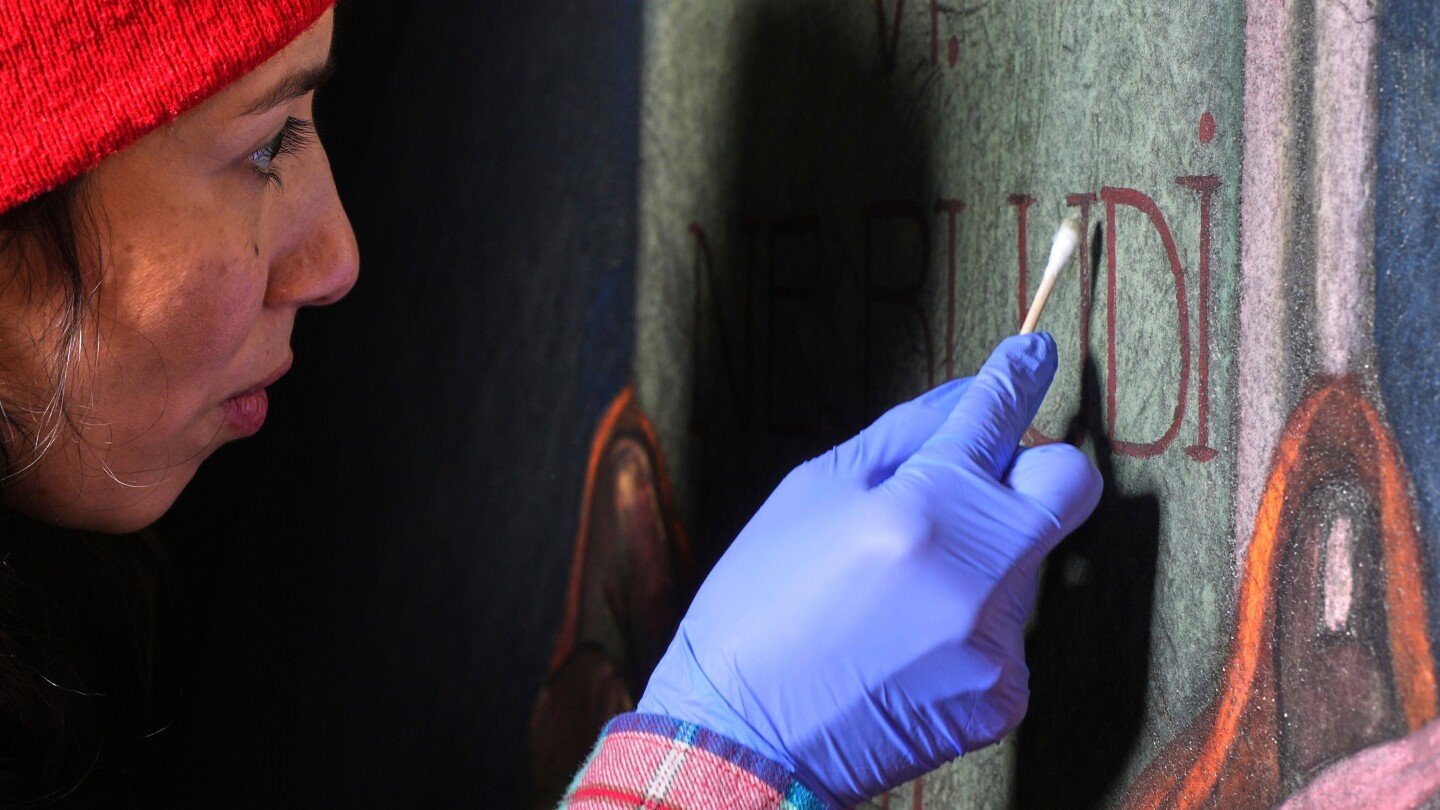
MILLVALE, Pa. (AP) — How do you conserve 80-year-old murals that have accumulated decades’ worth of soot, salt and other deterioration?
Slowly and carefully, using everything from scientific analysis to seaweed extract to everyday tools — like cosmetic sponges and shish kebab sticks.
That was the approach taken by a conservation team as they labored on a section of murals at St. Nicholas Croatian Catholic Church near Pittsburgh.
The walls and ceiling of the church are covered with an acclaimed set of murals painted by the late Croatian American artist Maxo Vanka in 1937 and 1941. They mix religious imagery with dramatic depictions of war, immigrant life, industrial hardship and moral contrasts — justice and injustice, greed and generosity.
The Society to Preserve the Millvale Murals of Maxo Vanka has been working for the past 15 years to conserve the paintings, one section at a time.
Over the past three years, a crew of 16 has worked intensively on the upper church. From January through May, that work focused on the upper-right walls and ceiling — including an Old Testament panorama featuring Moses and portraits of St. Matthew and St. Mark. The workers cleaned off grime, extracted corrosive salts, carefully reattached peeling paint and delicately added pigments where they had been lost.
“I found art conservation to be a good mix between art appreciation and science,” said Naomi Ruiz, a wall paintings conservator overseeing this year’s work.
The project began in January, when workers installed a 32-foot-high (9.8-meter-high) scaffold to provide close-up access to the murals.
Cleaning off decades of pollution
In the initial days, the conservation team brushed and vacuumed off surface dirt and soot. Then they used wet cosmetic sponges and thin cotton swabs to clean surfaces and grooves.
Much of the grime, they surmise, resulted from day-to-day atmospheric pollution, ranging from Pittsburgh’s once thriving steel mills to nearby highway traffic. The challenges are greater on one side of the church, which is damaged from exposure to more sunlight, which means more fluctuations in temperature and relative humidity.
Workers used fine tools to reach inside smaller indentations. Before long, they’d gone through thousands of soot-covered sponges.
Soon, the workers began to see the images becoming clearer, with gray sections returned to the original white painted by Vanka.
“It’s really fascinating, especially to see from below, a lot of these details that were lost coming back, and seeing what his initial vision was,” conservation technician Christina Cichra said.
Chemistry, color and cleaning
Workers also cleaned the aluminum leaf that forms backgrounds, as in the arch-shaped one behind St. Mark and St. Matthew.
They used a solution with neutral pH — neither alkaline nor acidic, both of which would damage the material.
Parts of the aluminum leaf have deteriorated entirely. The team’s original idea was to replace those sections with new leaf, but it was too shiny and didn’t match. After some experimentation, they decided on a mixture of watercolor and other materials.
“This was able to give us the right amount of sheen and tone to blend in with the original aluminum leafing,” Ruiz said.
To remedy paint loss, the crew used pastels and watercolors to fill in certain areas, while retaining Vanka’s original brushstrokes.
The team took a conservative approach, filling in only where necessary and using materials that can easily be removed, in case they or later conservators decide a different approach is needed. A primary goal is to reveal as much as possible of the original art.
Salts, poultices and seaweed
A major challenge is posed by sulfate salts, which occur naturally but can be especially prevalent where there is more air pollution, Ruiz said.
The salts react with moisture in the walls and cause deterioration.
The crew attached poultices — bandage-like containers of fine cellulose fibers — to affected spots. One type of chemical compound in the poultice leeches out the salts, a process repeated several times. Still more poultices were applied, this time with a different compound that strengthens the plaster.
In some areas, paint had curled, flaked or cracked. Workers gently reattached it with funori, an adhesive derived from a seaweed, and use a tacking iron to help secure the paint.
The preservation society, meanwhile, has worked with the parish on improvements such as roof repairs and a new climate control system to help prevent future damage from the elements.
It’s conservation, not restoration
Ruiz prefers not to use the word “restoration” for the project, although some of the work technically fits that category.
She said “conservation” is a more comprehensive term, which includes everything from documentation to preventive care while making Vanka’s original work as visible as possible.
“We want to really reveal what he did,” Ruiz said. “That’s what’s most important to us.”
___
Associated Press religion coverage receives support through the AP’s collaboration with The Conversation US, with funding from Lilly Endowment Inc. The AP is solely responsible for this content.
Lifestyle
Osprey are declining and environmentalists blame fishing industry’s take of menhaden
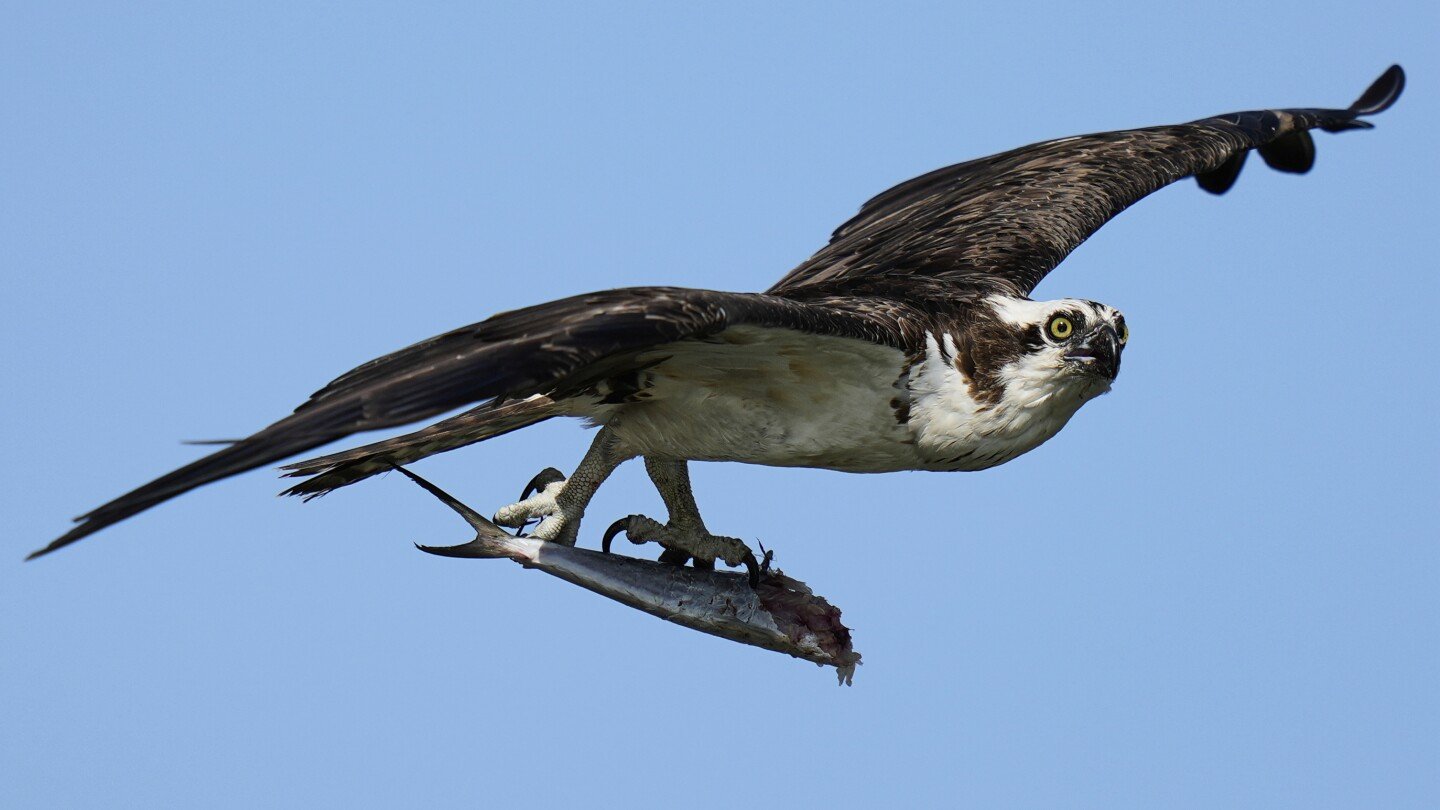
GLOUCESTER POINT, Va. (AP) — Stepping onto an old wooden duck blind in the middle of the York River, Bryan Watts looks down at a circle of sticks and pine cones on the weathered, guano-spattered platform. It’s a failed osprey nest, taken over by diving terns.
“The birds never laid here this year,” said Watts, near the mouth of Virginia’s Chesapeake Bay. “And that’s a pattern we’ve been seeing these last couple of years.”
An osprey is silhouetted as it perches atop a nest on the Lynnhaven River, June 30, 2025, in Virgina Beach, Va. (AP Photo/Stephanie Scarbrough)
Watts has a more intimate relationship with ospreys than most people have with a bird — he has climbed to their nests to free them from plastic bags, fed them by hand and monitored their eggs with telescopic mirrors.
The fish-eating raptor known for gymnastic dives and whistle-like chirps is an American conservation success story. After pesticides and other hazards nearly eliminated the species from much of the country, the hawk-like bird rebounded after the banning of DDT in 1972 and now numbers in the thousands in the U.S.
An osprey flies with a half-eaten fish in its talons above the Lynnhaven River, June 30, 2025, in Virginia Beach, Va. (AP Photo/Stephanie Scarbrough)
But Watts has documented an alarming trend. The birds, which breed in many parts of the U.S., are failing to successfully fledge enough chicks around their key population center of the Chesapeake Bay. The longtime biologist blames the decline of menhaden, a small schooling fish critical to the osprey diet. Without menhaden to eat, chicks are starving and dying in nests, Watts said.
Osprey are an environmental indicator
Watts’s claim has put him and environmental groups at odds with the fishing industry, trade unions and sometimes government regulators. Menhaden is valuable for fish oil, fish meal and agricultural food as well as bait.
U.S. fishermen have caught at least 1.1 billion pounds of menhaden every year since 1951. Members of the industry tout its sustainability and said the decline in osprey may have nothing to do with fishing.
But without help, the osprey population could tumble to levels not seen since the dark days of DDT, said Watts, director of the Center for Conservation Biology at The College of William & Mary in Williamsburg, Virginia.
Brian Watts, research professor and director of the Center for Conservation Biology at The College of William & Mary, looks over at failed osprey nest atop a wooden duck blind on the Lower York River, June 30, 2025, in Gloucester Point, Va. (AP Photo/Stephanie Scarbrough)
“The osprey are yelling pretty loudly that, hey, there’s not enough menhaden for us to reproduce successfully,” Watts said. “And we should be listening to them to be more informed fully on the fisheries side, and we should take precaution on the fisheries management side. But that hasn’t won the day at this point.”
Decline linked to menhaden in studies
Watts, who has studied osprey on the Chesapeake for decades, has backed his claims of population decline by publishing studies in scientific journals. He said it boils down to a simple statistic — to maintain population, osprey pairs need to average 1.15 chicks per year.
Osprey were reproducing at that level in the 1980s, but today in some areas around the main stem of the Chesapeake, it’s less than half of that, Watts said. In particularly distressed areas, they aren’t even reproducing at one-tenth that level, he said. And the decline in available menhaden matches the areas of nesting failure, Watts said.
A bald eagle, left, steals a fish from an osprey before it could feed above the Lynnhaven River, June 30, 2025, in Virginia Beach, Va. (AP Photo/Stephanie Scarbrough)
Also called pogies or bunkers, the oily menhaden are especially important for young birds because they are more nutritious than other fish in the sea. Osprey “reproductive performance is inextricably linked to the availability and abundance” of menhaden, Watts wrote in a 2023 study published in Frontiers in Marine Science.
Conservationists have been concerned for years, saying too many menhaden have been removed to maintain their crucial role in the ocean food chain. Historian H. Bruce Franklin went so far as to title his 2007 book on menhaden “The Most Important Fish In The Sea.”
Fishing industry pushes back
Menhaden help sustain one of the world’s largest fisheries, worth more than $200 million at the docks in 2023. Used as bait, the fish are critical for valuable commercial targets such as Maine lobster. They’re also beloved by sportfishermen.
The modern industry is dominated by Omega Protein, a Reedville, Virginia, company that is a subsidiary of Canadian aquaculture giant Cooke. The company pushed back at the idea that fishing is the cause of osprey decline, although it did acknowledge that fewer menhaden are showing up in some parts of the bay.
Federal data show osprey breeding is in decline in many parts of the country, including where menhaden is not harvested at all, said Ben Landry, an Omega spokesperson. Climate change, pollution and development could be playing a role, said Landry and others with the company.
Blaming fishing “just reeks of environmental special interest groups having an influence over the process,” Landry said.
New rules could be on the way
The menhaden fishery is managed by the Atlantic States Marine Fisheries Commission, an interstate body that crafts rules and sets fishing quotas. Prompted by questions about ospreys, it created a work group to address precautionary management of the species in the Chesapeake Bay.
A young osprey returns to its nest on the Lynnhaven River, June 30, 2025, in Virginia Beach, Va. (AP Photo/Stephanie Scarbrough)
In April, this group proposed several potential management approaches, including seasonal closures, restrictions on quotas or days at sea, and limitations on kinds of fishing gear. The process of creating new rules could begin this summer, said James Boyle, fishery management plan coordinator with the commission.
The osprey population has indeed shown declines in some areas since 2012, but it’s important to remember the bird’s population is much larger than it was before DDT was banned, Boyle said.
“There are big increases in osprey population since the DDT era,” Boyle said, citing federal data showing a six-fold increase in osprey populations along the Atlantic Coast since the 1960s.
Environmentalists says bird’s decline could worsen
To a number of environmental groups, any decline is too much. This irritates some labor leaders who worry about losing more jobs as the fishing industry declines.
Kenny Pinkard, retired vice president of UFCW Local 400’s executive board and a longtime Virginia fishermen, said he feels the industry is being scapegoated.
“There are some people who just don’t want to see us in business at all,” he said.
But Chris Moore, Virginia executive director for Chesapeake Bay Foundation, said the country risks losing an iconic bird if no action is taken. He said Watts’s studies show that the osprey will fail without access to menhaden.
“Osprey have been a success story,” Moore said. “We’re in a situation where they’re not replacing their numbers. We’ll actually be in a situation where we’re in a steep decline.”
___
Whittle reported from Portland, Maine.
___ This story was supported by funding from the Walton Family Foundation. The AP is solely responsible for all content.
Lifestyle
Cooling gadgets and wearables can help you beat the heat

You can only sit in front of the fridge with the door open for so long.
As heat waves blast the world like a blow dryer on high, folks are reaching for anything that promises a little personal chill: portable mini fans, cooling neck wraps, high-tech vests and all kinds of heat-beating headwear.
Of course, cooling gear helps most when paired with basic and safe strategies against the heat: most importantly hydration, shade and rest. Stay out of extreme heat when possible, and know the signs of heat exhaustion or heat stroke.
Yet these wearable wonders and breezy gadgets can offer some relief. They might look quirky, but when the AC struggles and the sidewalk feels like a stovetop, they can start to seem like must-haves.
When you’re at home
Indoors, stay comfy with cool-feel sheets (like those with a silky finish or lightweight fibers), bed fans (where a nozzle inserted into the bed linens pumps a flow of air around you), or a cooling pillow or chill pad, which are filled with a gel that can stay cool for hours. Sleep-product brands include Serta, Sealy, Casper, Pluto and Threshold.
The chill pads can work for your own bed and the pets’ bed too. There are chillable full-size mattresses (Chilipad, 8Sleep and BedJet get good reviews from The Spruce) and smaller, simple pads (CoolCare and Sharper Image, among others).
Outdoor wearables
Clare Epstein, an employee safety expert with Vector Solutions in Tampa, Florida, works to reduce heat stress for at-risk employees in industries like construction, aviation and agriculture. She recommends wearables like cooling scarves and evaporative cooling vests.
“By soaking the fabric in cold water at the beginning of the day, the vest slowly cools, and keeps the wearer cool,” she says.
Clothes made of “phase change materials,” or PCMs, contain gel capsules or pads that can help moderate body temperatures. Uline.com advertises a vest that stays under 60 degrees for a few hours, and AlphaCool offers a neck tube that performs similarly. Another feature of the tube, which is made of a polymer material, is that it doesn’t get overly chilled, so it’s safe for kids to use.
Also for kids, there’s a line of plush toys from Warmies that includes little critters of the farmyard, ocean, forest and safari that can be popped in the freezer before a trip to the park or playground.
Wearable items that incorporate small fans or thermoelectric coolers are also good, Epstein says. And there are vests with tubed reservoirs you can fill with water or electrolytes so you can sip as you go.
“These encourage people to take more water breaks, and stay hydrated,” says Epstein.
The wearables range is extensive. Along with cooling buffs, headbands, wristbands, socks and scarves, there are cooling brimmed hats and ball caps. Brands include Mission, Ergodyne, and Sunday Afternoon.
If you’d prefer a refreshing breeze, USB-chargeable handheld or wearable fans might do the job.
Chill advice
Lynn Campbell, co-founder of 10Adventures travel company in Calgary, Alberta, takes a lot of strenuous hiking and cycling trips with her husband, Richard. They’ve developed some easy hacks for hot days.
“We’ll wake up early, so we’re done by 10 or 11 a.m., or if we’re out on the trails, split the day in two, so we rest by water or in the shade over the hottest part” of the day, she says.
Wear light colors and thin, breathable fabrics.
And bring an umbrella. “This is a game-changer,” Campbell says. “Now we always pack ultralight, compact ones; they’re incredible.”
Also, pour cool water on your head and back. “We freeze a few bottles of water so we can pour ice water on us to cool down,” Campbell says. “Putting the bottles under the armpits, in the groin, or on the back of the neck can effectively cool a person down.”
And Annita Katee, a contributing writer for Apartment Therapy, has another way to prep your bed on hot nights:
“Pop your sheets into the freezer at least two hours before bedtime, then pull them out right before you hit the sack,” she wrote in a recent post. She folds hers into a zipped plastic bag, flattens it, then sets it on a freezer shelf between ice packs.
“The result? A delightfully cool bed that feels like a refreshing oasis against the heat.”
___
New York-based writer Kim Cook covers design and decor topics regularly for The AP. Follow her on Instagram at @kimcookhome.
For more AP Lifestyles stories, go to https://apnews.com/lifestyle
Lifestyle
Americans buying less cereal may be a factor in sale of Kellogg’s brands
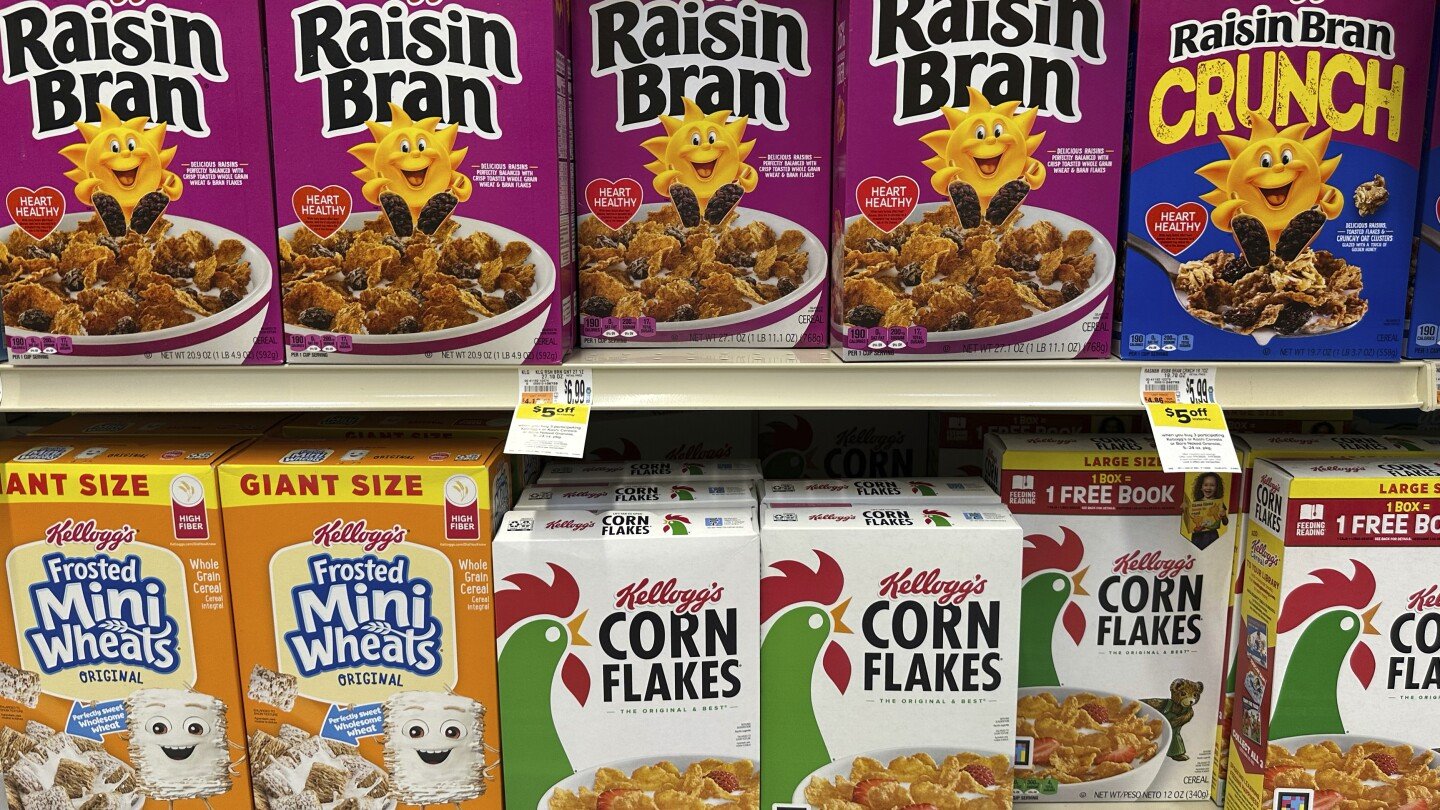
Breakfast cereal could use a lucky charm.
U.S. sales of the colorfully packaged morning staple have been in a decades-long decline, a trend back in the spotlight with news that Italian confectioner Ferrero Group plans to purchase WK Kellogg, maker of Corn Flakes, Froot Loops, Rice Krispies and other familiar brands.
Except for a brief period during the coronavirus pandemic, when many workers were home and had time to sit down with a bowl of cereal and milk, sales of cold cereal have steadily fallen for at least 25 years, experts say.
In the 52 weeks ending July 3, 2021, Americans bought nearly 2.5 billion boxes of cereal, according to market research company Nielsen IQ. In the same period this year, the number was down more than 13% to 2.1 billion.
Cereal has been struggling for multiple reasons. The rise of more portable options like Nutri-Grain bars and Clif Bars – which both went on sale in the early 1990s – made it easier for consumers to grab breakfast on the go.
Concerns about food processing and sugar intake have also dimmed some consumers’ enthusiasm for cereals. One cup of Lucky Charms contains 24% of a consumer’s daily recommended intake of sugar, for example.
“Cereal finds it really hard to get out from underneath that,” said Tom Rees, global insight manager for staple foods at the consulting company Euromonitor. “It can’t escape the fact that it doesn’t look like a natural food. You have to create it and form it.”
Rees noted that for decades, cereal manufacturers focused on adding vitamins and minerals to build cereal’s health credentials. But consumers now are looking for simplified ingredient lists.
Artificial dyes — like the petroleum-based colors that brighten Froot Loops — have also come under fire. Last fall, dozens of people rallied outside WK Kellogg’s Battle Creek, Michigan, headquarters demanding that it remove artificial dyes from its cereals. Kellogg and General Mills — another major U.S. cereal maker — have since pledged to phase out artificial dyes.
Add to that, consumers are expanding their idea of what breakfast can be. Yogurt and shakes have replaced the traditional bacon and eggs. Kenton Barello, a vice president at the market research firm YouGov, said his polling shows that Generation Z consumers, who were born between 1997 and 2007, eat more vegetables for breakfast than other generations.
Barello said YouGov’s polling also shows that members of Gen Z are less likely to eat breakfast but still buy ready-to-eat cereal, suggesting they’re eating it as a snack or for other meals.
“With younger generations, there are differences in their relationship with food and these eating moments,” Barello said. “They are going about breakfast in a different way than Millennials, Gen X and Baby Boomers.”
Cereal’s struggles are part of what led to the breakup of the Kellogg Company. In 2023, the century-old company that put Battle Creek, Michigan, on the map split into two companies. Kellanova took popular snack brands like Cheez-Its, Pringles and Pop-Tarts as well as international cereals, and WK Kellogg made cereals for the U.S., Canada and the Caribbean.
In 2024, M&M’s maker Mars Inc. announced a plan to buy Kellanova for more than $30 billion. That plan has cleared U.S. regulators but is still awaiting regulatory approval in Europe. WK Kellogg was left to try to rejuvenate the cereal business.
The sale of WK Kellogg to Ferrero doesn’t mean supermarket cereal aisles are at risk of extinction. Packaged food companies have options for turning around their soggy cereal sales, Rees said. He thinks Kellogg’s Mashups line, which mixed brands like Frosted Flakes and Froot Loops into one box, appeal to younger consumers, who tend to like interesting flavor combinations.
The market may also have a fragmented future, according to Rees. Companies may have to accept that younger buyers want a sweet-and-spicy cereal while older buyers might want a Keto-friendly option.
“The future might be realizing that the era of ‘This brand will serve everybody’ isn’t going to happen,” Rees said.
Julia Mills, a food analyst with the consulting company Mintel, thinks the shrinking population of children in the U.S. gives cereal makers the opportunity to shift to more sophisticated flavors and packaging. Cereal could be positioned as a fancy topping for yogurt, for example, or a fiber-rich food that can improve gut health.
Some niche cereal brands, like high-fiber Poop Like a Champion cereal and high-protein, zero-sugar Magic Spoon, are already doing that. But legacy brands say they shouldn’t be counted out.
Jeffrey Harmening, the chairman and chief executive officer of Cheerios maker General Mills, said his company considered trying to acquire Magic Spoon. Instead, it made high-protein versions of Cheerios, which now outsells Magic Spoon.
“The key to longer term is, honestly, is giving consumers more of what they want,” Harmening said during a conference call with investors in March.
-

 Sports5 days ago
Sports5 days agoThe behind-the-scenes story of a WNBA controversy: Caitlin Clark, DiJonai Carrington and a journalist’s questions
-

 Africa5 days ago
Africa5 days agoCairo telecom fire injures 14, disrupts internet nationwide
-
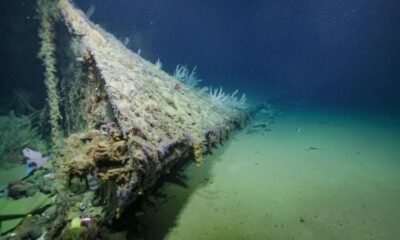
 Asia4 days ago
Asia4 days agoA torpedoed US Navy ship escaped the Pacific in reverse, using coconut logs. Its sunken bow has just been found
-

 Asia4 days ago
Asia4 days agoGujarat state: Bridge collapse kills 9 in India
-
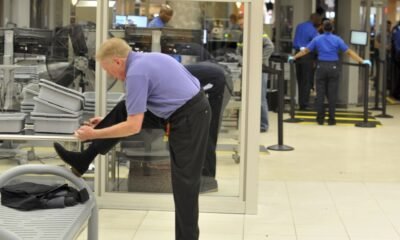
 Lifestyle5 days ago
Lifestyle5 days agoRemoving shoes to board a plane may be a thing of the past
-

 Africa4 days ago
Africa4 days ago30% on South African imports: Ramaphosa hits back at new Trump tariffs
-

 Sports5 days ago
Sports5 days agoTyrese Haliburton to miss entire 2025-26 NBA season to rehab torn Achilles tendon
-

 Europe4 days ago
Europe4 days agoExtreme heat is a killer. A recent heat wave shows how much more deadly its becoming as humans warm the world




